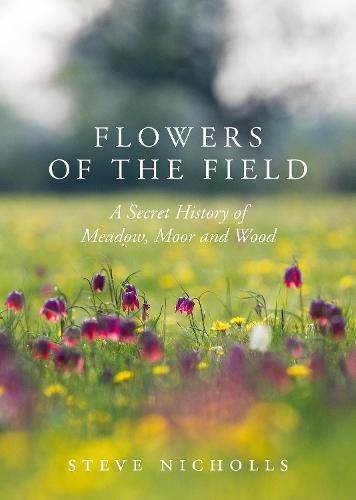Readings Newsletter
Become a Readings Member to make your shopping experience even easier.
Sign in or sign up for free!
You’re not far away from qualifying for FREE standard shipping within Australia
You’ve qualified for FREE standard shipping within Australia
The cart is loading…






From the machair grasslands of the Outer Hebrides to the chalk cliffs of Kent, and from the dense pinewoods of Abernethy forest to the wetlands of the Fens of eastern England, Britain offers a richly varied array of habitats for our wild flowers.
The distinguished science and natural history producer and filmmaker Steve Nicholls presents a visually stunning survey of Britain’s best-loved wildflowers, illustrated with the his own beautiful photographs of flora in their habitat. Focusing on three broad habitats - grassland, open land and woodland - he offers a biologically rigorous but engagingly readable account of our wild flowers and the places that nourish them.
He probes deep into the social and cultural history of wild flowers to tell a plethora of fascinating stories, from the ‘daffodil trains’ which transported Londoners to the ‘golden triangle’ in Gloucestershire to experience woodlands carpeted with wild daffodils, to the odd case of the Bath asparagus - which isn’t an asparagus at all, but rather the edible flower buds of the rare spiked star of Bethlehem, which used to grow in abundance around Bath.
$9.00 standard shipping within Australia
FREE standard shipping within Australia for orders over $100.00
Express & International shipping calculated at checkout
From the machair grasslands of the Outer Hebrides to the chalk cliffs of Kent, and from the dense pinewoods of Abernethy forest to the wetlands of the Fens of eastern England, Britain offers a richly varied array of habitats for our wild flowers.
The distinguished science and natural history producer and filmmaker Steve Nicholls presents a visually stunning survey of Britain’s best-loved wildflowers, illustrated with the his own beautiful photographs of flora in their habitat. Focusing on three broad habitats - grassland, open land and woodland - he offers a biologically rigorous but engagingly readable account of our wild flowers and the places that nourish them.
He probes deep into the social and cultural history of wild flowers to tell a plethora of fascinating stories, from the ‘daffodil trains’ which transported Londoners to the ‘golden triangle’ in Gloucestershire to experience woodlands carpeted with wild daffodils, to the odd case of the Bath asparagus - which isn’t an asparagus at all, but rather the edible flower buds of the rare spiked star of Bethlehem, which used to grow in abundance around Bath.